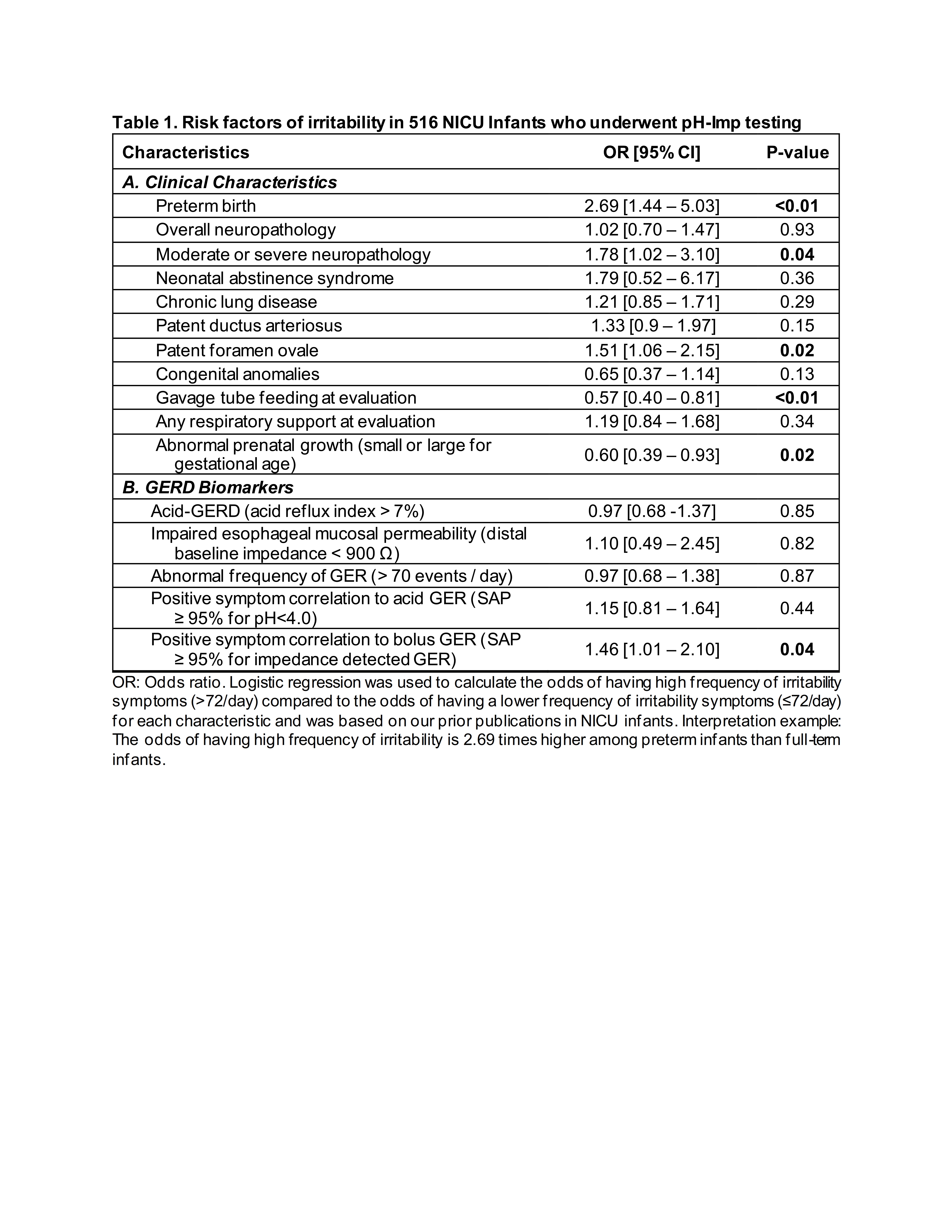Neonatal General
Neonatal General 4: GI-Nutrition-Growth
683 - The Irritable Infant in the Neonatal Intensive Care Unit: Risk factors and GERD Biomarkers
Publication Number: 683.232

Minna Njeh, BS, Chem (she/her/hers)
Research Assistant
Nationwide Children's Hospital
Columbus, Ohio, United States
Presenting Author(s)
Background:
Irritability is common in neonatal intensive care unit (NICU) infants manifesting as neck and back arching, autonomic changes, and an expression of discomfort (crying). When combined with aero-digestive difficulties, gastroesophageal reflux (GER) or GER disease (GERD) is frequently implicated and treated without objective evidence.
Objective: Our objective was to determine the potential risk factors of irritability, including patient and GER characteristics via pH-impedance testing.
Design/Methods: This is a retrospective analysis from a pH-impedance database of symptomatic NICU infants suspected of having GERD. Infants (N=516 born at 30.1±4.5 weeks gestation) underwent 24-hr pH-impedance testing with symptom correlation at 41.7±3.2 weeks postmenstrual age. Trained NICU staff continuously documented the irritability symptoms. Logistic regression methods were used to identify potential risk factors of irritability and included: a) patient characteristics- prematurity, neuropathology, chronic lung disease, cardiac impairments, congenital anomalies, abnormal prenatal growth, and aero-digestive support at evaluation; and b) GER characteristics- acid reflux index (ARI), distal baseline impedance (DBI), frequency of GER events, and positive symptom correlation defined as symptom associated probability (SAP) ≥ 95%.
Results: A total of 40,029 irritability events and 42,155 GER events from 516 infants were detected. The average number of irritability events was 78 ± 41 per patient per day with median [IQR] of 72 [49-102]. Irritability was more likely in infants who: 1) were born preterm, 2) had moderate or severe neuropathology, 3) had patent foramen ovale, 4) were oral feeding at evaluation, 5) had average prenatal growth, and 6) had positive symptom correlation with physical GER bolus (Table 1). Additionally, the prevalence of positive symptom correlation (SAP≥95%) to acid refluxate was noted in 96 (19%) of infants, to bolus GER was noted in 110 (21%) of infants, and to any GER (acid or bolus) was noted in 172 (33%) of infants.
Conclusion(s): These results confirm that acid-GERD is unlikely to be the primary cause of irritability in NICU infants, and therefore should not be treated empirically with acid suppressive therapies. The correlation with prematurity, oral feeding, and moderate/severe neuropathology suggests that arching/irritability may be a protective motor response to multiple stimuli including GER and feeding. Our pH-impedance evaluation protocols can identify potential mechanisms at the point of care.
